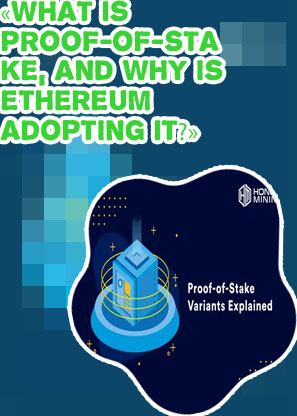

Ethereum's transition to a proof of stake consensus mechanism has been a highly anticipated and debated topic within the cryptocurrency community. Understanding the implications, benefits, and challenges of this shift is crucial for anyone involved in the Ethereum ecosystem. To provide a comprehensive insight into Ethereum proof of stake, here are three articles that delve into various aspects of this upgrade.
Ethereum's transition from proof of work to proof of stake has been a highly anticipated and debated topic within the cryptocurrency community. As Ethereum aims to improve scalability, security, and energy efficiency, understanding the intricacies of proof of stake is crucial. To delve deeper into this subject, we have curated a list of two articles that provide insightful perspectives and analyses on Ethereum's proof of stake mechanism.
Today, we have the pleasure of interviewing an expert in the field of blockchain technology, who has recently written a comprehensive guide on Ethereum's Proof of Stake. Let's dive right into the discussion!
Q: Can you explain what Proof of Stake is and how it differs from Proof of Work? A: Proof of Stake is a consensus mechanism used in blockchain networks like Ethereum, where validators are chosen to create new blocks based on the number of coins they hold and are willing to "stake" as collateral. This is in contrast to Proof of Work, which relies on miners solving complex mathematical puzzles to validate transactions.
Q: What are some of the advantages of Proof of Stake over Proof of Work? A: Proof of Stake is more energy-efficient and cost-effective than Proof of Work, as it does not require miners to compete in solving computational puzzles. It also encourages validators to act in the best interest of the network, as they have a financial stake in maintaining its integrity.
Q: How does Ethereum plan to transition from Proof of Work to Proof of Stake? A: Ethereum is currently in the process of implementing Ethereum 2.0, which will introduce Proof of Stake as the consensus mechanism. This upgrade aims to improve scalability, security, and sustainability of the network.
Ethereum, one of the leading cryptocurrencies in the market, is currently undergoing a significant transition from a Proof of Work (PoW) to a Proof of Stake (PoS) consensus mechanism. This transition is expected to bring about a multitude of benefits while also posing several challenges.
One of the key benefits of Ethereum's transition to PoS is the potential for increased scalability. PoS is more energy-efficient compared to PoW, as it does not require miners to solve complex mathematical puzzles to validate transactions. This means that the network can process transactions faster and more efficiently, leading to improved scalability. Additionally, PoS is expected to enhance the security of the Ethereum network by incentivizing validators to act honestly through the staking of their own tokens.
However, the transition to PoS also comes with its fair share of challenges. One of the main concerns is the potential centralization of power among a few large validators, which could compromise the decentralization of the network. Moreover, the implementation of PoS requires a significant amount of coordination and planning, which could lead to delays and technical hurdles.
In conclusion, the transition of Ethereum to PoS holds great promise for improving scalability and security. However, it also presents challenges that must be addressed to ensure the successful implementation of this
